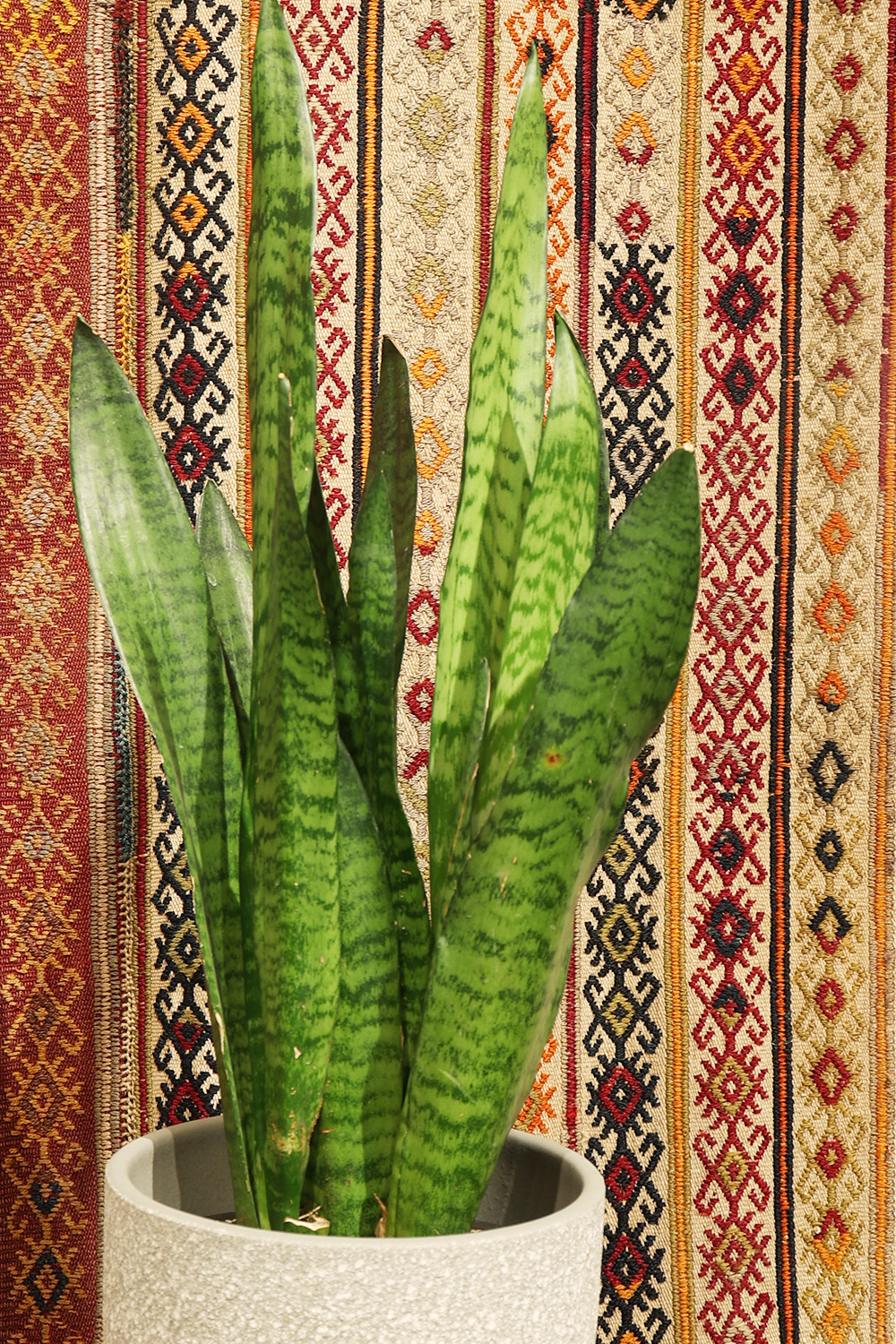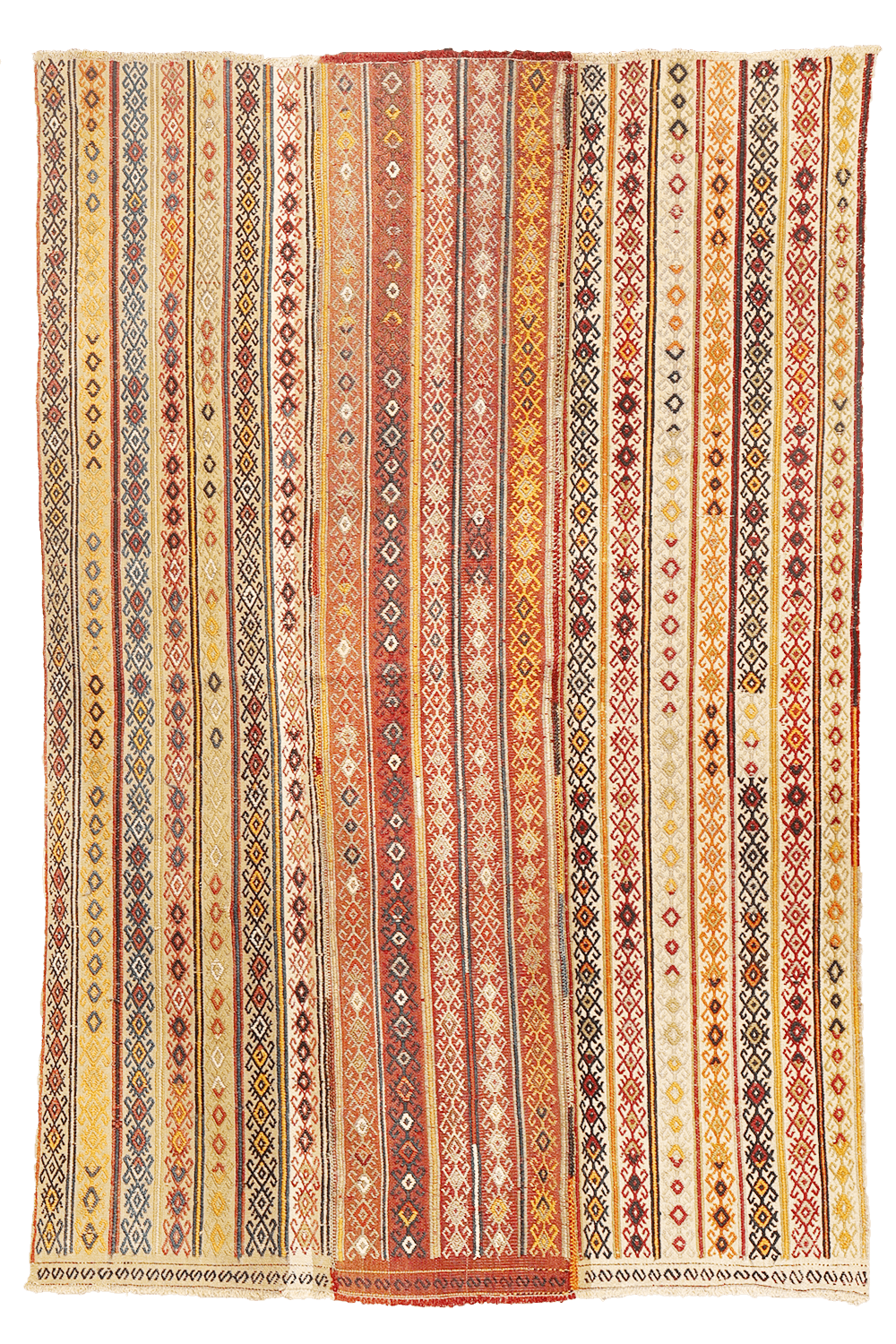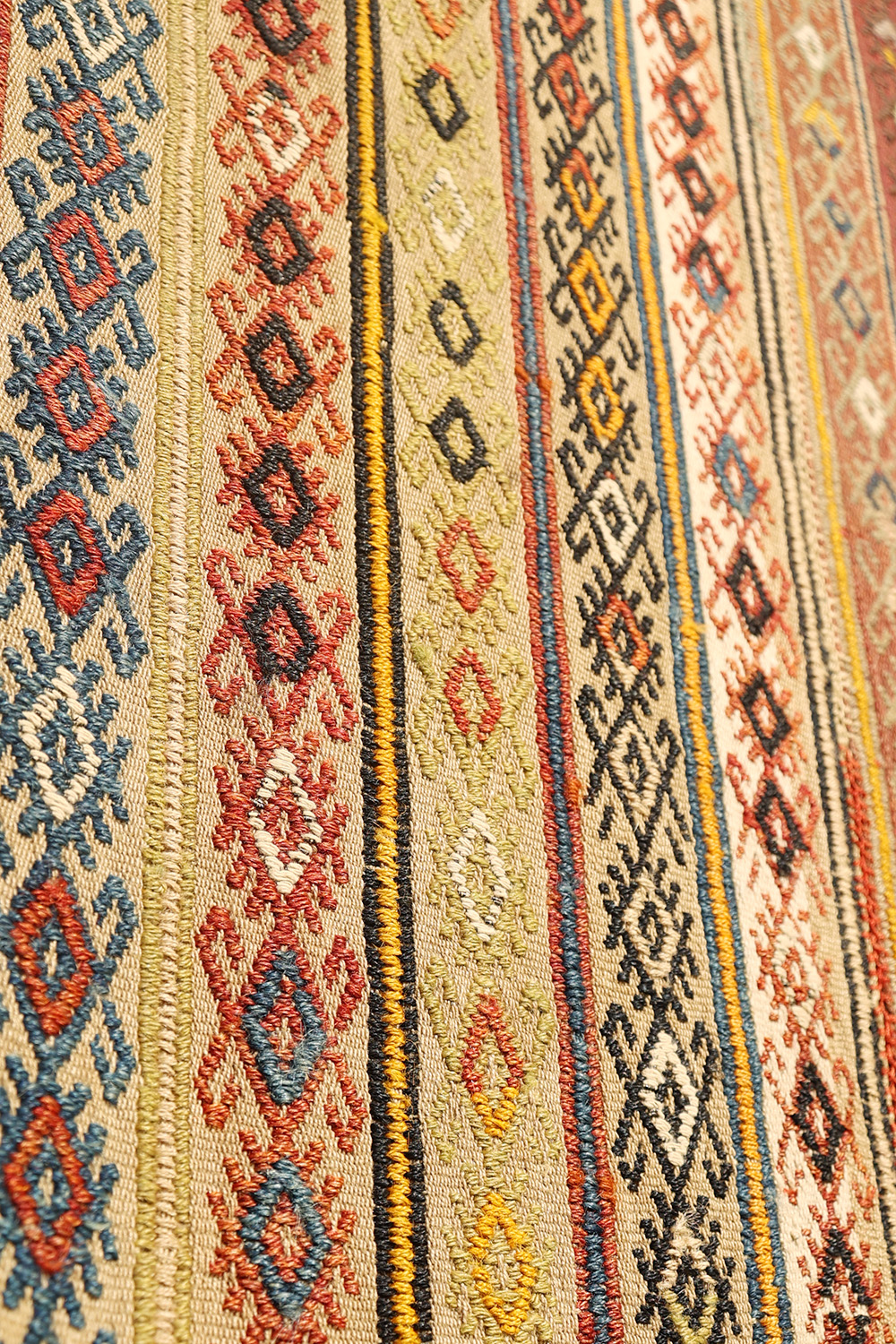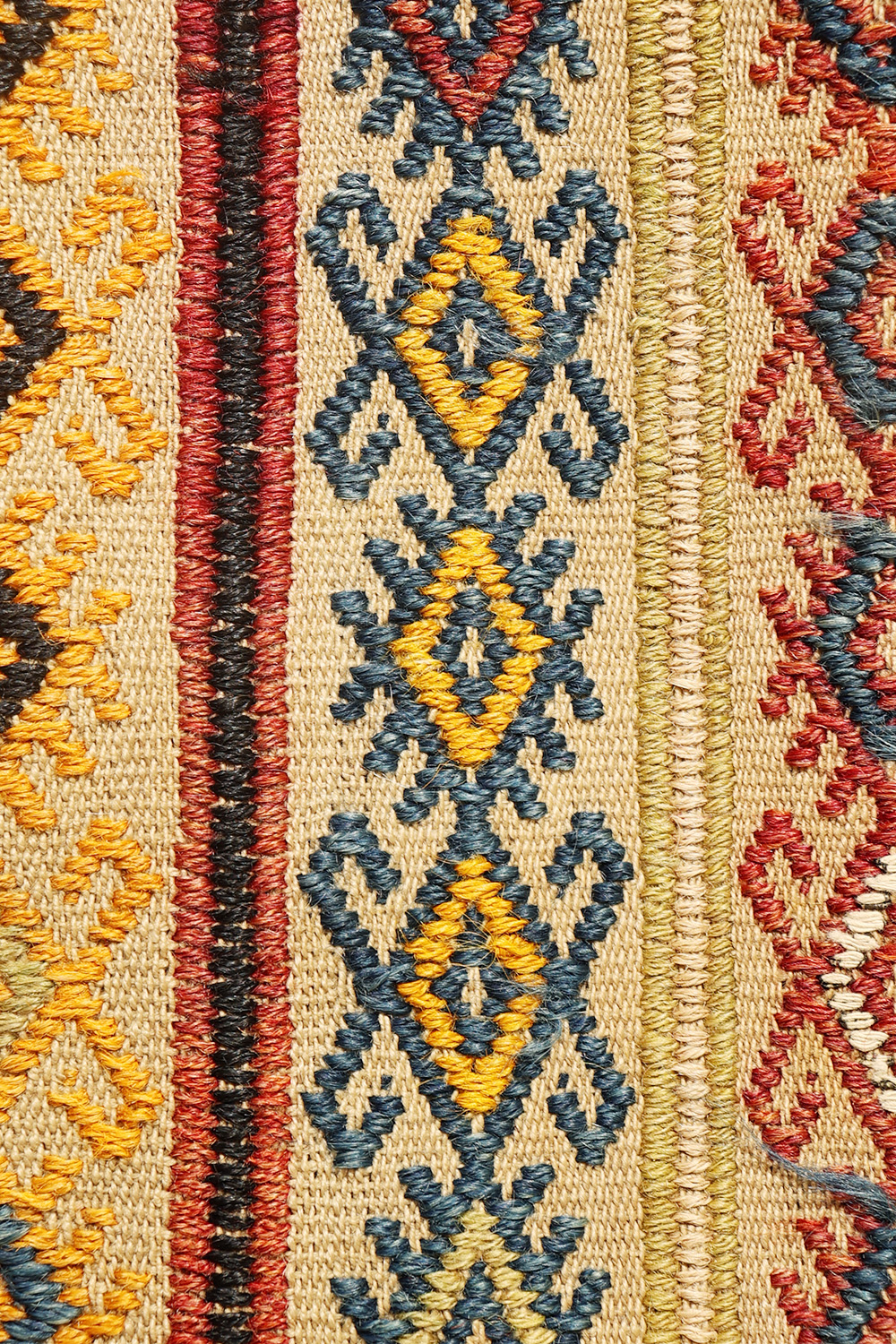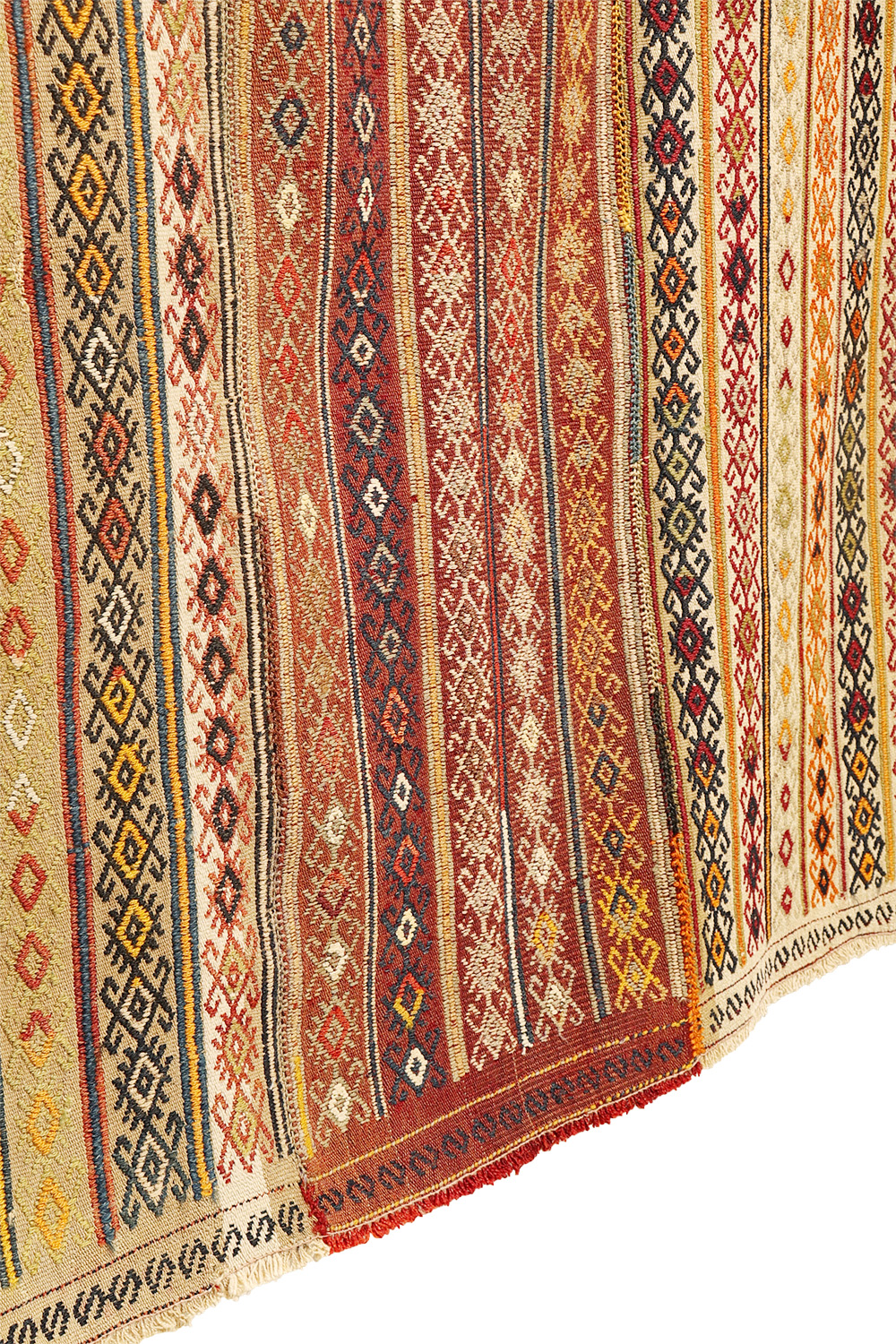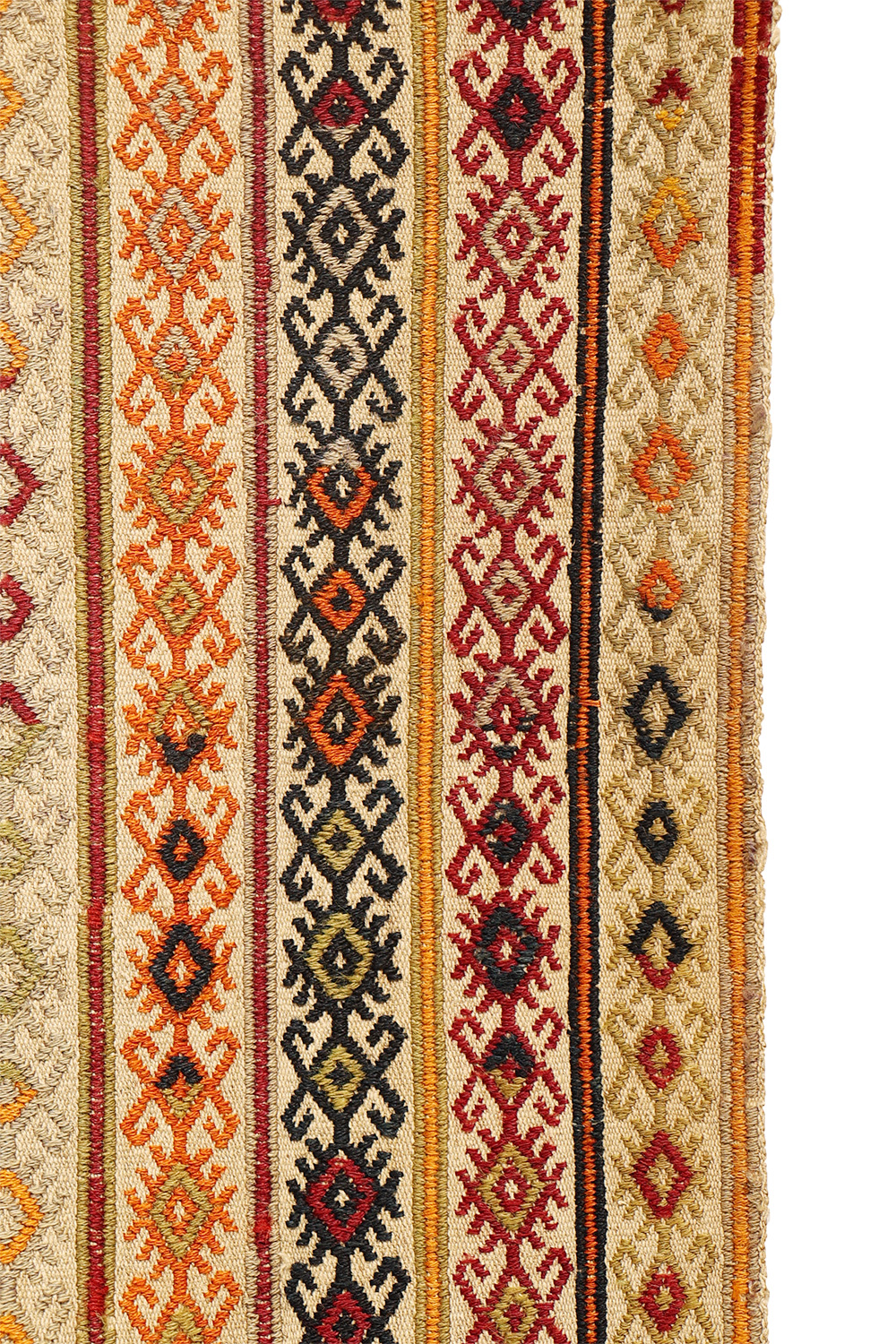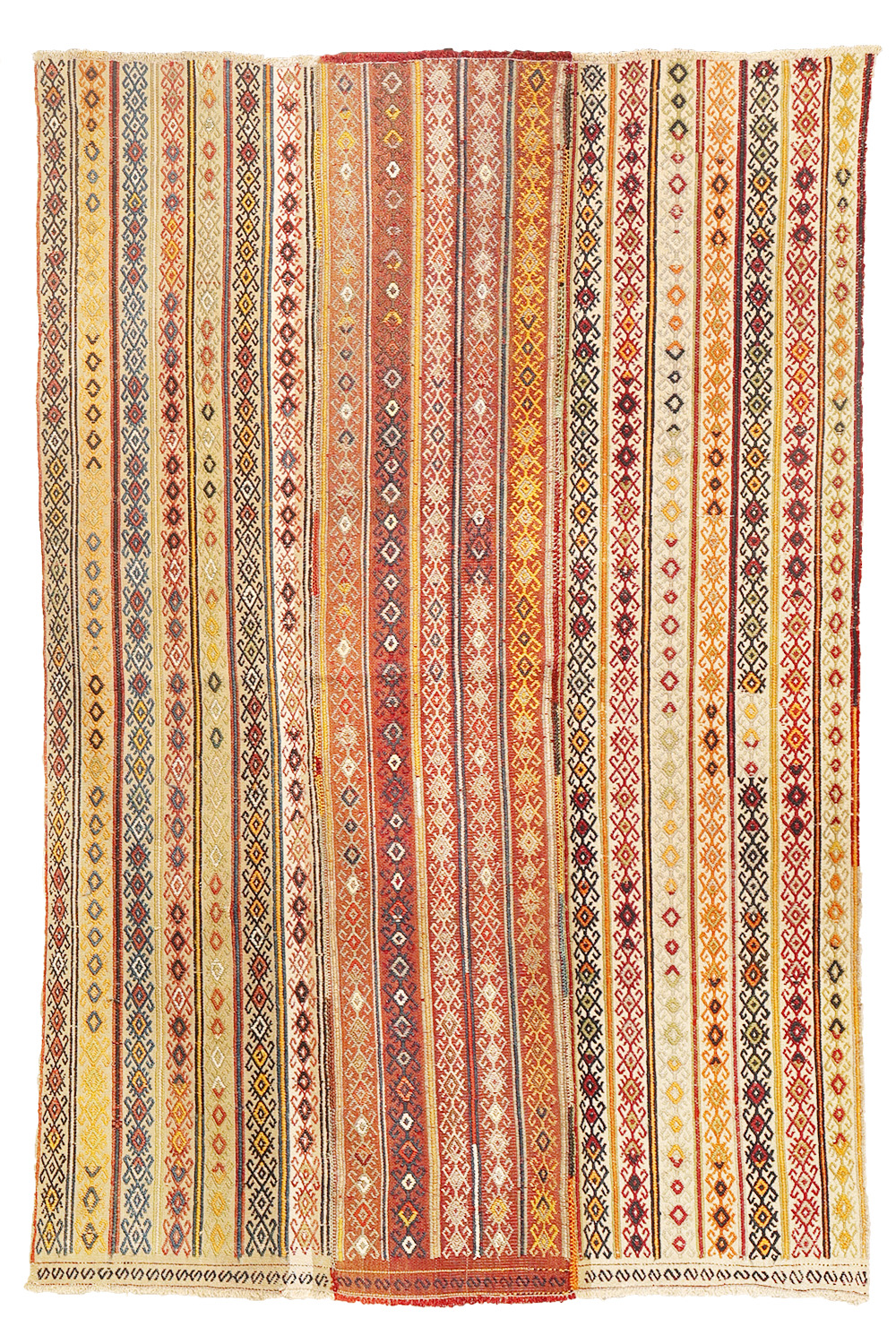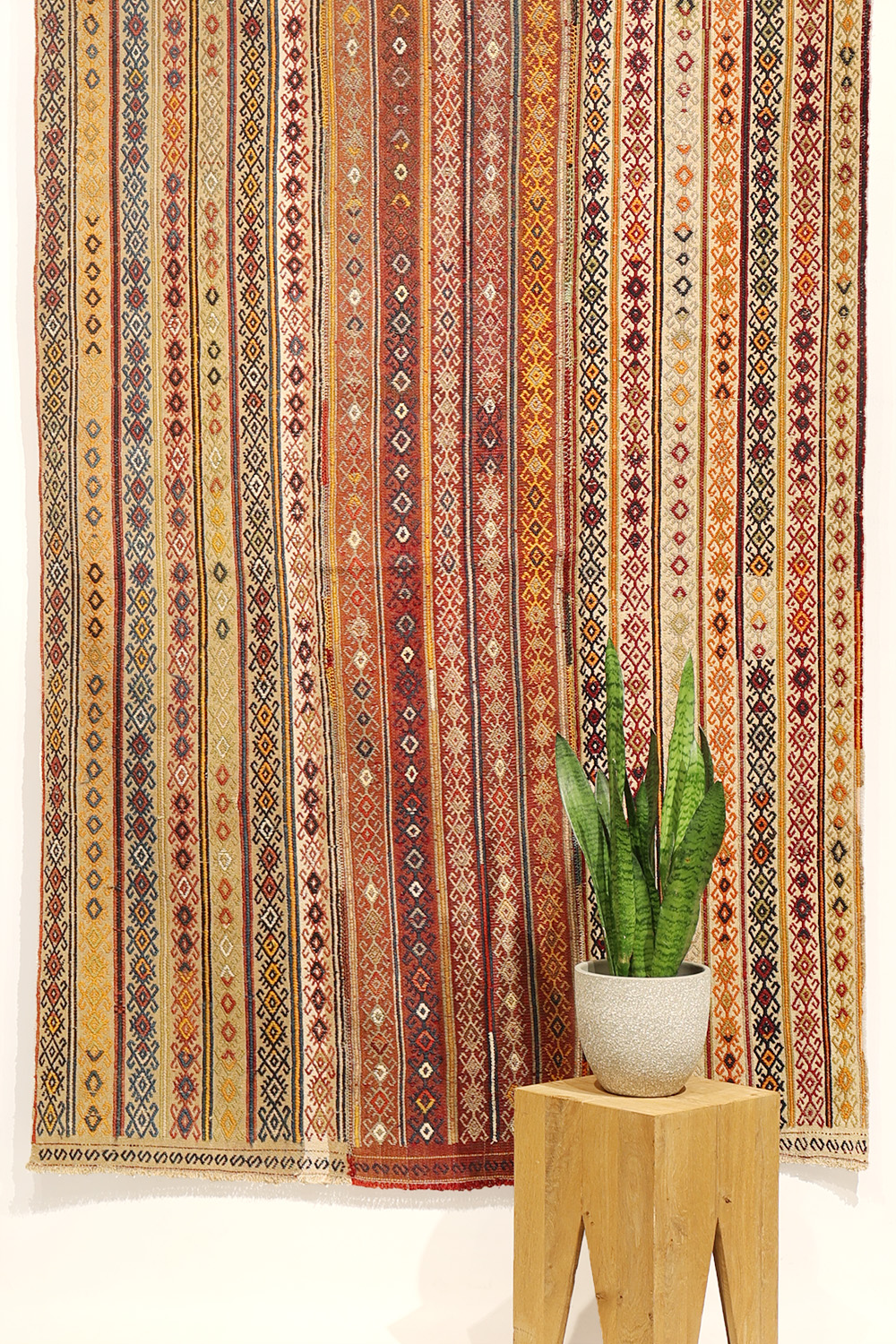Antique Elbistan Kilim with Pıtrak Motif
This antique kilim from Elbistan was woven by a highly skilled craftswoman using the cicim technique. The wool is exceptionally finely spun, allowing for the creation of small, intricate patterns. The design features a series of vertical bands, each decorated with the traditional Turkish pıtrak (thistle) motif, meticulously woven in cicim.
Due to the limited size of the loom available to the weaver, she could only produce narrow strips. To achieve the full width of the kilim, she wove three separate bands and expertly joined them together. Finely spun wool was used throughout, except in one narrower strip—noticeably whiter than the rest—where she used undyed white cotton.
All dyes used are natural, and the kilim remains in excellent condition. A remarkable piece that reflects both technical mastery and deep cultural heritage.
Material: 100% hand-spun sheep wool and cotton in one white stripe
Size: 190x130cms
Origin: Elbistan, Turkey
Date of weaving: 1920s
In Turkish, pıtrak is a motif that is believed to originate from an ideogram symbolizing the sun—without which plants could not grow. However, this origin has been forgotten over the centuries, and the motif has been passed down orally under a name inspired by something very familiar to pastoral communities: the small thistle well known to weavers, who spend hours removing it from wool before spinning.
Does this mean that pıtrak, which also refers to a plant whose seeds stick to clothing and, more importantly, to the hair of animals—particularly to the fleece of sheep—is not linked to a myth or ancient belief? In rural settings, the Turkish expression “pıtrak gibi”, literally “like a thistle”, with the implied meaning “abundant like thistles”, seems to support this interpretation: the thistle would be nothing more than a representation of the plant itself, symbolizing fertility—just like the ear of wheat or the pomegranate—solely due to its botanical nature.
A solar and feminine representation
Another observation, however, brings us back to the sun and invites a different reading. Near Ankara, at the Hittite site of Alacahöyük, bronze ritual solar standards have been unearthed, dated to the second half of the 3rd millennium BCE. These feature a “thistle” very similar to the one seen on kilims. As noted in reference to the diamond symbol, the people of Anatolia view the sun as a feminine celestial body.
Thus, pıtrak may in fact be a solar representation: the center of the diamond-shaped motif would express its feminine nature, while the radiating lines symbolize its rays—often compared, in traditional culture, to the radiance of a woman.
1 in stock
| Weight | 3.7 kg |
|---|
